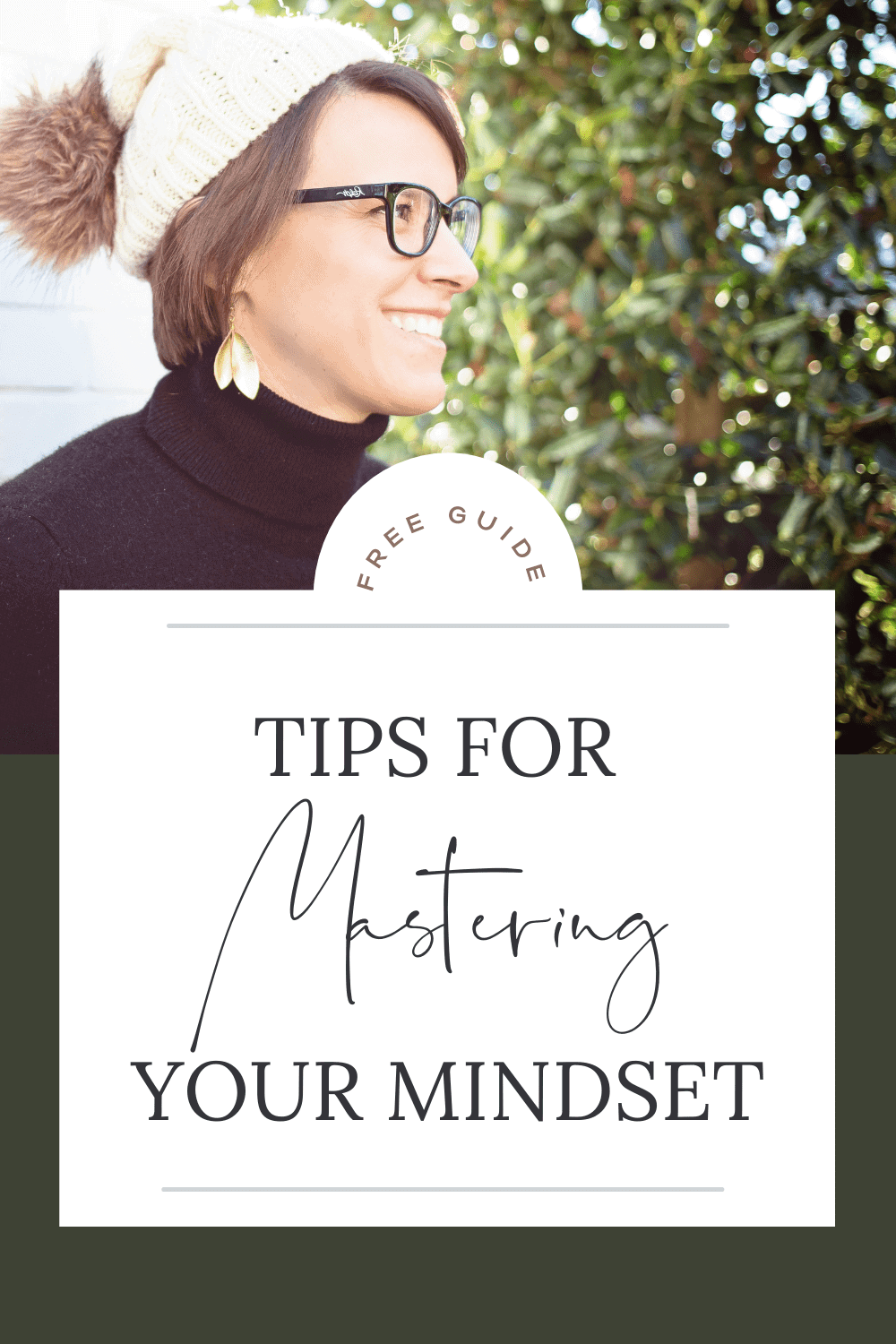No More Limits: What Are Limiting Beliefs & How Can You Overcome Them?
Benjamin Franklin once said, “You can do anything you set your mind to.” And as a celebrated polymath who boasted various accomplishments from founding father to inventor to printer to postmaster, he certainly lived according to that maxim. But despite the fact that he lived 200+ years ago, we hear this quote all the time even today—whether while growing up, throughout our careers, or in raising our own children as a source of encouragement and positive thinking.
What’s interesting though is we don’t always address the fact that the opposite is just as true: you can’t do anything you don’t set your mind to. Because the reality is what we believe in is incredibly powerful and shapes how we feel and see the world. However, our beliefs can also limit us in not only our thinking, but also our actions and ultimately, our lives. And this is where limiting beliefs come in.
What Are Limiting Beliefs?
In effect, limiting beliefs are thoughts, convictions, or opinions that we believe to be absolute truths that hold us back in some shape or form. As a result, they prevent us from growing, achieving our goals, taking risks or new opportunities, or becoming the people we want to be.
These beliefs can be about yourself (“I’m not an artistic person”), the world (“I can’t switch careers because people will judge me”), or life in general and how it works (“I should avoid confrontation at all costs”). In fact, the word “should” is a prime culprit when we are trying to identify limiting beliefs. But in the end, the result is generally the same: we’re kept in the same box our minds have unconsciously built.
Where Do Our Limiting Beliefs Come From?
As to be expected, most limiting beliefs are developed in our youth as we’re shaping who we are and how we view the world around us. So it follows that the specific origins of limiting beliefs can really vary from person to person. In general though, limiting beliefs typically stem from a few sources, including:
- How you were raised as well as the beliefs your family instilled in you and how you interpreted those beliefs. This could cover a wide range of topics from whether you feel valued by others to what type of career path you should take to how you should behave in social settings.
2. Your education by not only your teachers and professors, but also by your family, friends, and peers. While growing up, you’re constantly learning and absorbing new information, ideas, and opinions about yourself as a person as well as how things work and this can shape your own conceptions of what you can and cannot do.
3. Your life experiences, especially any that end negatively, and the conclusions you draw from them. These experiences can create limiting beliefs as defense mechanisms to avoid adverse feelings in the future.
Business mindset coach Nina Cooke summed it up nicely in Forbes: “Many limiting beliefs are created in our childhood. Devastatingly, they become part of our identity… Mistakenly, we think these stories are keeping us safe, protecting us from rejection and humiliation. The reality is, they’re just stories we make up in our head by attaching made-up meanings to events. And they cost us dearly all our lives.”

Examples of Limiting Beliefs
So what are some examples of common limiting beliefs? By and large, limiting beliefs typically follow a framework of “I’m not…” or “I can’t…” or “I don’t…” or with the connotation that “This is how the world works…” As you can imagine, the possibilities when it comes to limiting beliefs can ironically enough be limitless.
As mentioned earlier, they can also cover a wide range of topics. You can have limiting beliefs about yourself and your capabilities or circumstances, about what other people will think or do based on your actions or what’s socially acceptable, or about life in general and how things work. Some examples you may have heard or even thought of yourself include:
- “I am not worthy of being loved.”
- “I am not smart/pretty/talented enough.”
- “I could never open my own business.”
- “I don’t have enough time/experience/resources to pursue my passion.”
- “I should avoid failure at all costs.”
- “I should never question authority.”
- “I’m too old to go back to grad school.”
- “No one will want to date me because I’m divorced.”
- “It’s too late to adopt a healthier lifestyle.”
- “All romantic relationships end in heartbreak.”
Overcoming Limiting Beliefs, Step by Step
Even though limiting beliefs can be difficult to discern because they are so ingrained in our mindsets and how we approach our day-to-day lives, the good news is it is possible to overcome them. However, like many things, doing so takes time and it’s important to respect the process and be patient.
In general, the key to overcoming limiting beliefs is reflection, self-awareness, and reframing. You need to not only identify your limiting beliefs and take responsibility for them, but also let them go and reframe them in order to move forward. Below is a step-by-step process on how to do just that. However, it’s important to note that overcoming limiting beliefs hardly has a one-size-fits-all methodology. For some people, this process will work well; for others, alternatives like therapy, meditation, or other forms of self-improvement may work best. In the end, only you know what works best for you!
1. Choose a Topic That You Want To Address
Due to the wide span of topics that limiting beliefs can involve, start with picking one that you want to address. For example, think about your career and what ideas you hold that may be preventing you from accomplishing your goals. Other topics can be your love life, friendships, family relationships, finances, health, hobbies, or general thoughts about life and the world.
Perhaps you feel like a confident business woman on the inside, but when it comes time to live into that identity on the outside, you struggle to overcome impostor syndrome. If this feels familiar, rest assured – you are not alone. The good news is, you can push past this – keep reading for how to do so.
2. Write Down Your Limiting Beliefs About That Topic
Once you pick your topic, write down all the relevant limiting beliefs that fall under it that you feel strongly about or affect you everyday. What has held you back in this part of your life? In this category, what have you used as excuses in the past? What patterns have you noticed that you tend to fall into? Take time to evaluate your past behavior when you acted negatively and where that may have originated from as well as recurring challenges you’ve faced and why that might be.

3. Consider How Your Limiting Beliefs Have Protected You
In a similar vein, ask yourself how a belief has protected or served you thus far in your life. Mark Manson, author of “The Subtle Art of Not Giving A F*ck,” explains it well here: “We like to imagine ourselves to be the victims of our own limiting beliefs, but the truth is that we adopt these beliefs because they serve us in some way… Generally, we hold onto limiting beliefs for the same reasons—to protect ourselves from struggle and failure. Also, we often hold onto limiting beliefs because they make us feel special, self-righteous or that we deserve special attention… Beliefs only stick if they serve us in some way, figure out how your belief is serving you and ask yourself if it’s really worth it or not.”
There are times when we hold onto our limiting beliefs because it feels safe, whereas getting outside our comfort zone means coming face-to-face with the scary and unknown. Be honest with yourself: how are your limiting beliefs serving you?
4. Reject Your Limiting Beliefs, Reframe Them, and Test Out The Alternatives
Once you’ve reflected on the context and reasoning behind a limiting belief, ask yourself, “What if I’m wrong? What if it’s not true?” Think about what that would mean and what your world would look like. Remember what limiting beliefs are at their core—they’re just thoughts or stories you’ve told yourself. That doesn’t necessarily make them true.
Then think about some alternatives to your limiting belief and reframe it into an empowering idea. For example, instead of thinking “It’s too late to adopt a healthier lifestyle,” change it to “I haven’t been living a healthy lifestyle, but I am willing to start now.”
However, the other half of the coin in taking back your power is being willing to test out those reframed beliefs in the real world. As Omar Itani puts it, “You will not be able to overcome your limiting beliefs if you don’t see real contradicting evidence in your behavior… While you are the one who creates your limiting beliefs, it is your behavior that solidifies them. Likewise, it is your behaviour that would debunk them.”
How To Create and Practice New Beliefs: Affirmations
In addition to testing out alternative ideas, you can also create and practice new beliefs, specifically through positive affirmations. By speaking about yourself in a positive manner and repeating them over time, you’ll begin to believe them more and more.
Moreover, the great thing about affirmations is they can correlate to a limiting belief. For example, if you question your ability to be loved, you can write down or say out loud “I am valuable and lovable.”
Remember that affirmations are about celebrating your successes and strengths and reminding yourself of what you’re capable of. Because in the end, you really can do anything you set your mind to.
COMMUNICATIONS & MINDSET TOOLS



